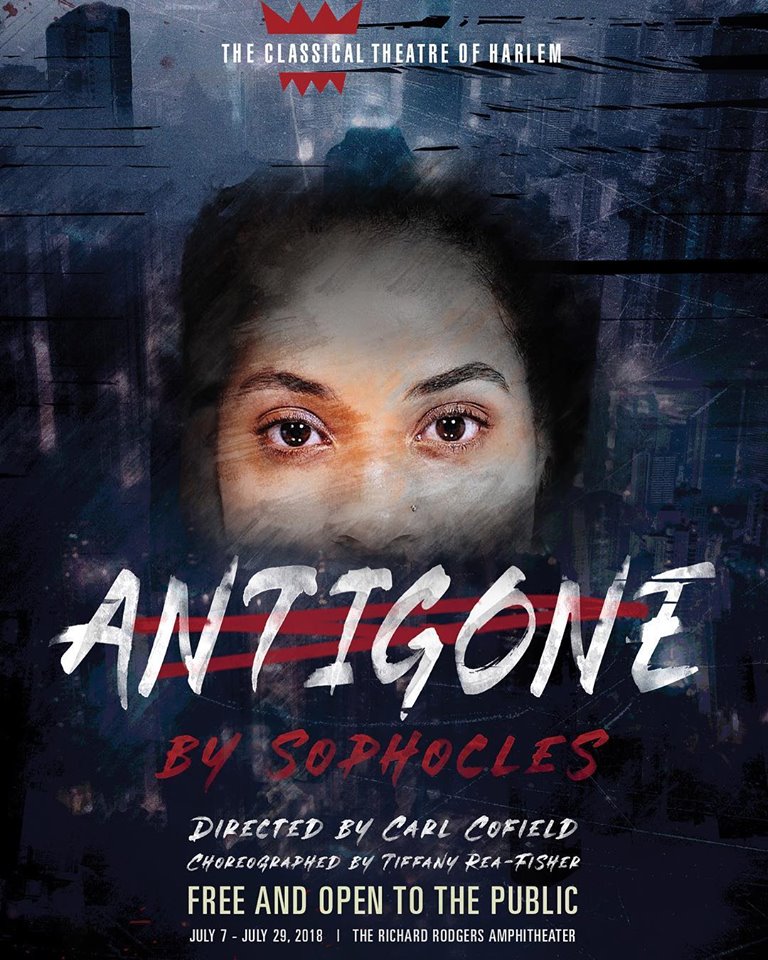July 29th 2018. The last night of a free performance of “Antigone” in Marcus Garvey Park. Free art, in a park? God, I love New York.
My sister took me to see the play. It was her second time. A perfect summer evening. Fireflies. A stillness coupled with a cool lull. A snack of fried plantains and we’re in our seats, mingling to the eager chatter of the audience.
Art can speak volumes. A play has the power to evoke emotion and relay hidden meaning. It can spark dialogue with scathing commentary, it can stay with the audience, a reminder of our human fragility for months to come.
This play did all that. It was at once contemporary and classical, timeless and tragic. Specific, yet universal. The actors and dancers – poetic and poised.
Yet, it was the simplicity of words which held the most power.
At the end of the play, words are lit upon the backdrop on stage.
Signatures. Visual epithets, written by human hands. Such a simple act, to demonstrate individuality.
I recognise 2 names. Only two. From far away, back in Sydney, Australia, I have read those names before.
I read “Trayvon Martin”.
I read “Philando Castile”.
Those are the only names I recognise, and then, with a slow coldness, I begin to realise why all those other names are also on the wall.
The effect is potent.
Those names, written with careful curves, with considered edges and soft slanted angles, with middle-names full of flourish and the charm of well-placed dots, breathe back the person whose name was before, a fragment of a news cycle, uniform and repetitious.
Your signature is your soul defined. Your spirit, written. Every person takes care to construct their signature. A conscious articulation of your being, your identity to the world.
You see the age, the confidence, the personality in each signature. You see artistry, seriousness, youth, humour and conscientiousness. You see humanity.
I stop reading the names. I realise there are too many to read.
Like many others, I am leaving. I take a photo. To remember not just the names, but the people who wrote them.
4 weeks later, I am at home. I return to a home where a renowned racist radio jock says the n-word and the feature is still allowed to go to air. I return to a cartoon about Serena Williams which is defended as a caricature, but her competitor is drawn to be light-skinned with straight blonde hair (not at all like the real competitor, half-Haitian, half-Japanese, dark-skinned, frizzy-haired Naomi Osaka) which demonstrates the thinly-veiled racism and purposeful defining of her “otherness”. I return to an Indigenous population that still has developing-world health issues, to refugees on Nauru, to an average of 1 woman a week dying in domestic violence, to a rising rate of suicide for our men.
It is now 3 months later. Why am I writing this?
Harlem and New York brought forth a clarity of thought, of articulation and discourse which I am clumsily trying to navigate. So I write.
Travel is more than a hit-list of locations and a guide-book of experiences. It is a priviledge to travel. It is a choice to learn from it. This play was not a pit-stop. It was not a bucket list ticked. This play, along with many other experiences I had in New York, was an opportunity to learn.
At home, in Australia, we have our own signatures to read.
